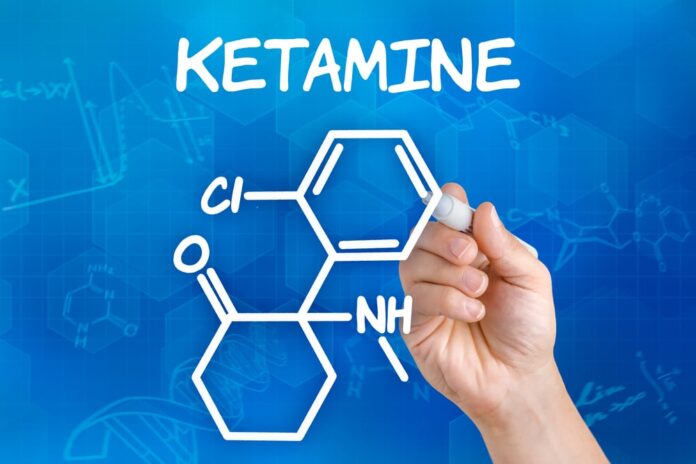Ketamine, a dissociative anesthetic once used primarily in operating rooms and veterinary clinics, has emerged as an effective treatment for depression, anxiety, PTSD, and other mental health conditions. Ketamine therapy has gained popularity in recent years as a promising alternative to traditional antidepressants and other psychiatric medications. But how does it work, and why is it so effective? In this article, we’ll explore the science behind it and its potential benefits.
What is Ketamine Therapy?
Ketamine therapy involves the use, a powerful anesthetic drug, to treat various mental health conditions. The drug is administered in low doses, typically through an intravenous (IV) infusion, nasal spray, or lozenge. The therapy is usually provided in a clinical setting and is closely monitored by a healthcare professional.

How Does Ketamine Work?
Ketamine works by binding to and blocking the N-methyl-D-aspartate (NMDA) receptor, which is responsible for regulating the neurotransmitter glutamate. Glutamate is involved in many key functions in the brain, including learning, memory, and mood regulation.
In depression and other mental health conditions, there is evidence of decreased glutamate activity in certain areas of the brain, leading to a decrease in neural connectivity and communication. Ketamine therapy center has been shown to increase glutamate activity in these areas, leading to a rapid improvement in mood and other symptoms.
It also stimulates the release of certain neurotransmitters, such as serotonin and dopamine, which are involved in mood regulation and reward processing. This release can help to alleviate symptoms of depression and other mental health conditions.
Why is Ketamine Therapy Effective?
It has emerged as a promising treatment option for depression, anxiety, PTSD, and other mental health conditions. The therapy involves the use, a powerful anesthetic drug, administered in low doses, typically through an intravenous (IV) infusion, nasal spray, or lozenge. So, why is it effective?

• Bypassing Traditional Pathways
One of the main reasons for the effectiveness of ketamine therapy is its ability to bypass traditional pathways used by other antidepressant medications. Traditional antidepressants work by changing the levels of certain neurotransmitters in the brain, such as serotonin, norepinephrine, and dopamine, to help regulate mood. However, this process can take weeks or months to produce noticeable results.
It works differently. It directly stimulates neural activity, leading to an increase in glutamate activity and the release of other neurotransmitters, such as serotonin and dopamine. This direct stimulation leads to a more rapid improvement in symptoms, often within hours or days.
• Increasing Neural Activity
Ketamine therapy has also been shown to increase neural activity in certain areas of the brain. This increase in neural activity is thought to promote neural plasticity, or the brain’s ability to adapt and change over time. This increase in neural plasticity is believed to help patients develop more resilient neural pathways and processes, leading to long-term improvements in mental health.
• Increasing Glutamate Activity
It also increases glutamate activity in certain areas of the brain. Glutamate is a neurotransmitter involved in many key functions in the brain, including learning, memory, and mood regulation. In depression and other mental health conditions, there is evidence of decreased glutamate activity in certain areas of the brain, leading to a decrease in neural connectivity and communication.
Ketamine therapy has been shown to increase glutamate activity in these areas, leading to improved neural connectivity and communication. This improved neural connectivity is thought to contribute to the rapid improvement in mood and other symptoms experienced by patients undergoing ketamine therapy.
• Reducing Inflammation
Another potential reason for its effectiveness is its ability to reduce inflammation in the brain. Inflammation has been linked to several mental health conditions, including depression and anxiety. It has been shown to reduce inflammation in the brain, which may contribute to the therapy’s effectiveness in treating these conditions.
• Long-Lasting Effects
Ketamine therapy has also been shown to have long-lasting effects in some patients. Some patients experience sustained improvements in symptoms even after the initial treatment has ended. This sustained effect is thought to be due to the drug’s ability to promote neural plasticity, or the brain’s ability to adapt and change over time.

Potential Risks
While ketamine therapy has shown promise as a treatment option for several mental health conditions, it is important to note that there are potential risks associated with the therapy. The therapy involves the use of ketamine, a powerful anesthetic drug, administered in low doses, typically through an intravenous (IV) infusion, nasal spray, or lozenge.
• Side Effects
One potential risk of ketamine therapy is the potential for side effects. Common side effects include dissociation, hallucinations, and increased blood pressure. These side effects are typically mild and short-lived, but they can be more severe in some cases.
• Dissociation
Dissociation is a common side effect of ketamine therapy. It is characterized by a feeling of detachment from oneself and one’s surroundings. Some patients may experience a sense of floating or being disconnected from their bodies. While dissociation can be a disconcerting experience, it is typically short-lived and resolves quickly once the therapy is stopped.
• Hallucinations
Hallucinations are another potential side effect of ketamine therapy. They are characterized by seeing, hearing, or feeling things that are not there. Hallucinations are typically mild and short-lived, but they can be more severe in some cases.
• Increased Blood Pressure
Ketamine therapy can also cause an increase in blood pressure. This increase in blood pressure can be particularly concerning for patients with underlying cardiovascular issues, such as hypertension or heart disease.
• Abuse Potential
Another potential risk of ketamine therapy is its abuse potential. Ketamine is a Schedule III controlled substance in the United States, which means that it has a moderate to low potential for abuse and dependence. However, some patients may be at increased risk for abuse or dependence, particularly if they have a history of substance abuse or addiction.

Conclusion
Ketamine therapy is a promising treatment option for depression, anxiety, PTSD, and other mental health conditions. The therapy works by directly stimulating neural activity, leading to an increase in glutamate activity and the release of other neurotransmitters. Unlike traditional antidepressants, ketamine therapy can produce rapid results, often within hours or days, and has been shown to have long-lasting effects in some patients. While more research is needed to fully understand the long-term effects and potential risks of ketamine therapy, the science behind its effectiveness is promising.





![Calgary’s Hottest Neighborhoods for Luxury Homebuyers [2024]](https://thewashingtonote.com/wp-content/uploads/2024/04/Calgary-324x160.png)



